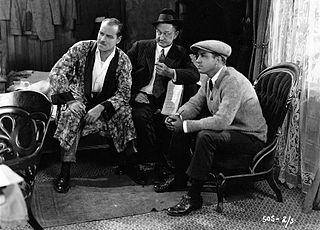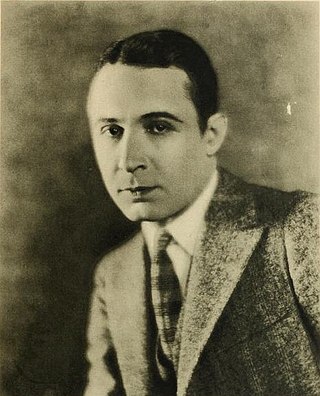Related Research Articles

Noah Nicholas Beery was an American actor who appeared in films from 1913 until his death in 1946. He was the older brother of Academy Award-winning actor Wallace Beery as well as the father of prominent character actor Noah Beery Jr. He was billed as either Noah Beery or Noah Beery Sr. depending upon the film.

George S. Barnes, A.S.C. was an American cinematographer active from the era of silent films to the early 1950s.

Charles G. Rosher, A.S.C. was an English-born cinematographer who worked from the early days of silent films through the 1950s.

Arthur Edeson, A.S.C. was an American cinematographer. Born in New York City, his career ran from the formative years of the film industry in New York, through the silent era in Hollywood, and the sound era there in the 1930s and 1940s. His work included many landmarks in film history, including The Thief of Bagdad (1924), All Quiet on the Western Front (1930), Frankenstein (1931), The Maltese Falcon (1941), and Casablanca (1942).
George Joseph Folsey, A.S.C., was an American cinematographer who worked on 162 films from 1919 to his retirement in 1976.

Arthur Charles Miller, A.S.C. was an American cinematographer. He was nominated for the Oscar for Best Cinematography six times, winning three times: for How Green Was My Valley in 1941, The Song of Bernadette in 1944, and Anna and the King of Siam in 1947.

Tony Gaudio, A.S.C. was an Italian-American cinematographer and sometimes is cited as the first to have created a montage sequence for a film.

Charles Edgar Schoenbaum A. S. C. was an American cinematographer. His known film credits began in 1917--although he probably had earlier films--and ended with his untimely death from cancer in 1951. He was nominated for an Academy Award in 1949 for his work on Little Women.

Gerard Montgomery Blue was an American film actor who began his career as a romantic lead in the silent era; and for decades after the advent of sound, he continued to perform as a supporting player in a wide range of motion pictures.
Robert North Bradbury was an American film actor, director, and screenwriter. He directed 125 movies between 1918 and 1941, and is best known for directing early "Poverty Row"-produced Westerns starring John Wayne in the 1930s, and being the father of noted "cowboy actor" and film noir tough guy Bob Steele.

Victor Potel was an American film character actor who began in the silent era and appeared in more than 430 films in his 38-year career.
William Welsh was an American actor of the silent era. He appeared in 153 films between 1912 and 1936. He was born in Philadelphia, Pennsylvania, and died in Los Angeles, California at age 76.

Bert Lawrence Glennon was an American cinematographer and film director. He directed Syncopation (1929), the first film released by RKO Radio Pictures.
Benjamin Harrison Kline was an American cinematographer and film director. He was the father of Richard H. Kline.

Curt Courant was a German cinematographer who worked on over a hundred films during the silent and early sound eras. Courant worked in several European countries, collaborating with figures such as Alfred Hitchcock and Fritz Lang. As he was of Jewish ancestry, Courant was forced to leave Germany in 1933 and go into exile following the Nazi takeover of power. Courant worked at several of the leading British studios during the mid-1930s. He was the uncle of Willy Kurant who also became a cinematographer.
Harry C. Neumann of Chicago, Illinois, was a Hollywood cinematographer whose career spanned over forty years, including work on some 350 productions in a wide variety of genres, with much of his work being in Westerns, and gangster films.
William Nobles was an American cinematographer.
Frank B. Good (1884–1939) was an American cinematographer who lensed more than 100 films between 1916 and 1937. He was known for working on Jackie Coogan productions and was an early member of the American Society of Cinematographers.
L. William O'Connell was an American cinematographer who worked in Hollywood between 1918 and 1950. He frequently worked with directors Howard Hawks and William K. Howard.
Chester A. Lyons (1885–1936) was an American cinematographer. Active in the American film industry from 1917 until his death he worked on over eighty films during his career, the majority of them in the silent era. He began his career with Triangle Films and was later employed by Paramount, Fox, First National and MGM.
References
- 1 2 "Edgar Lyons". American Film Institute. Retrieved September 26, 2020.